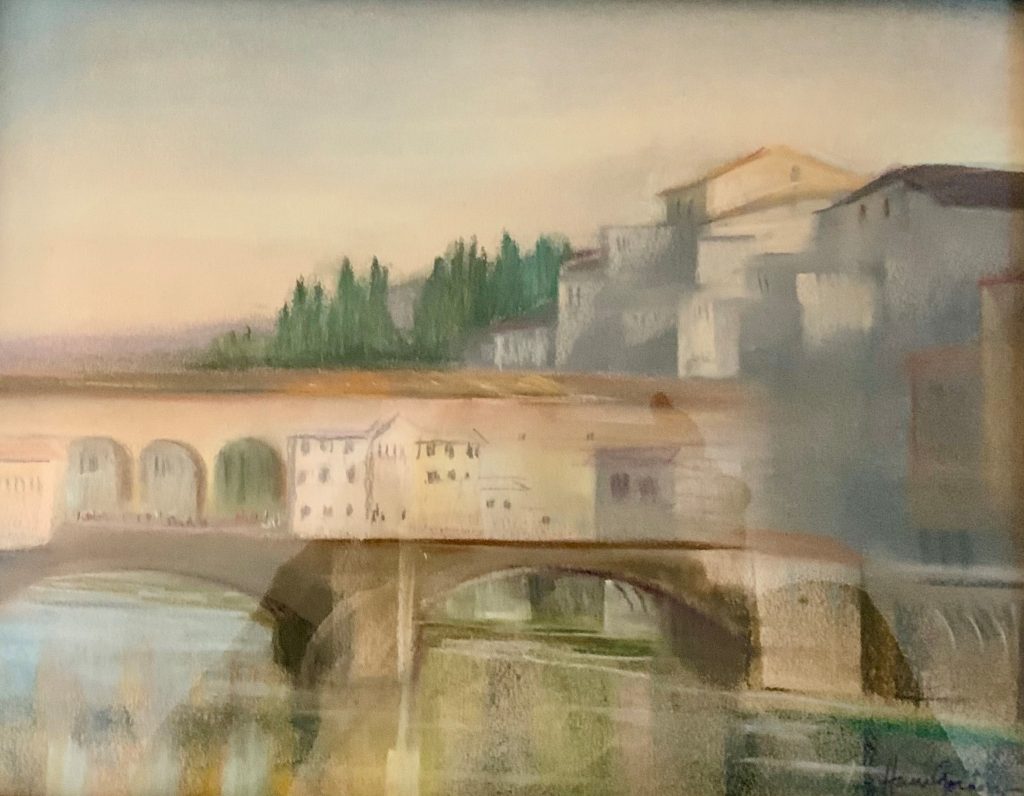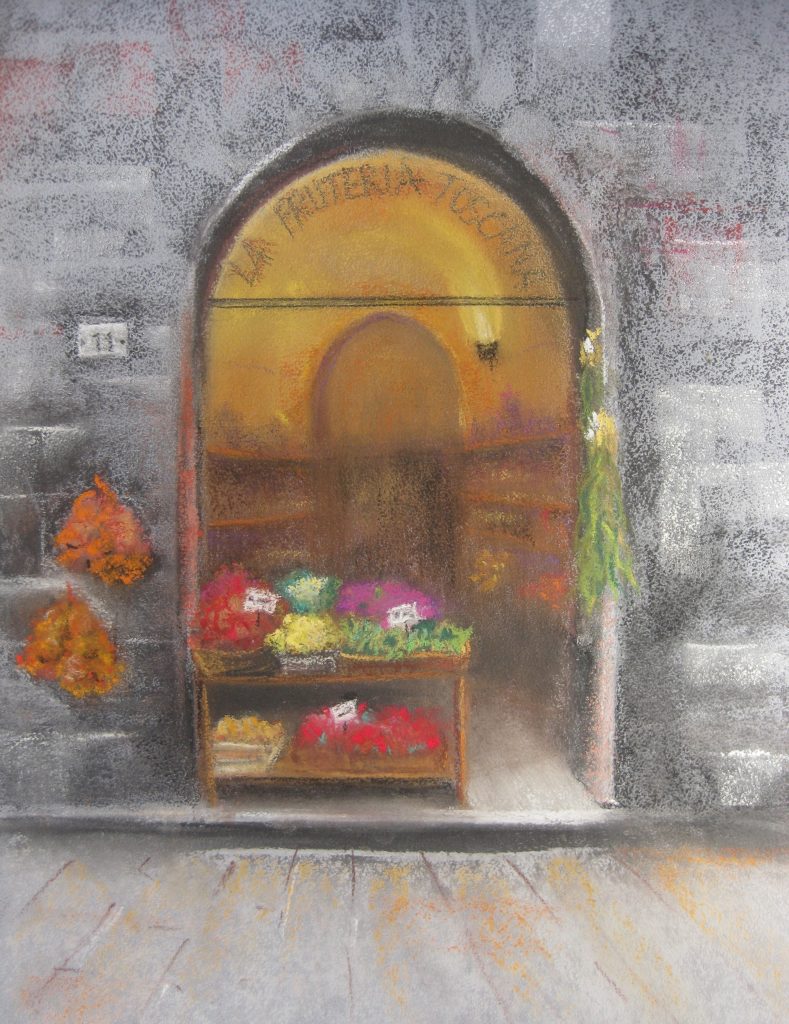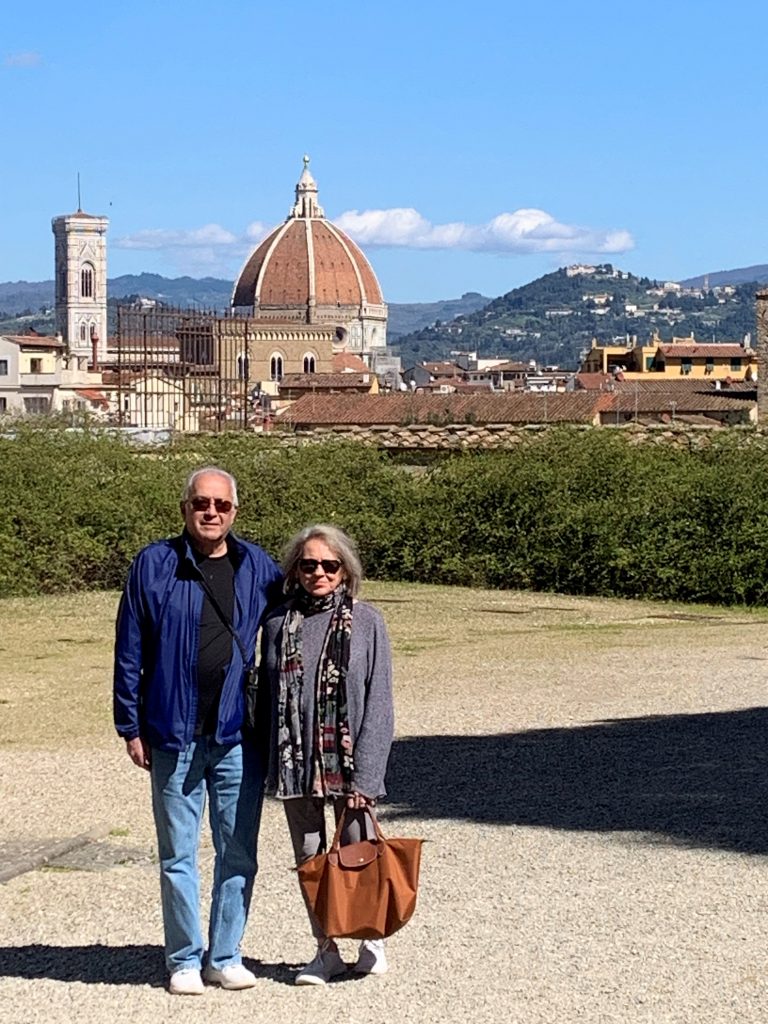
Queens, NY native Hana Gordon was an art history major at Syracuse when she came to the Florence program in the fall of 1966. She recently returned to the Villa Rossa with her husband Chet and chatted with us about what it was like to be here on November 4 when the calamitous flood overtook the Renaissance city and changed it forever.
“I remember waking up that morning to the sound of someone saying ‘aiuto!’ and it took a minute for me to translate it,” Hana recalls. She was living with her host family near Santa Croce on Corso Tintori. This was back when our students would live with two different families, switching halfway through the semester, but Hana didn’t do that because of the flood.
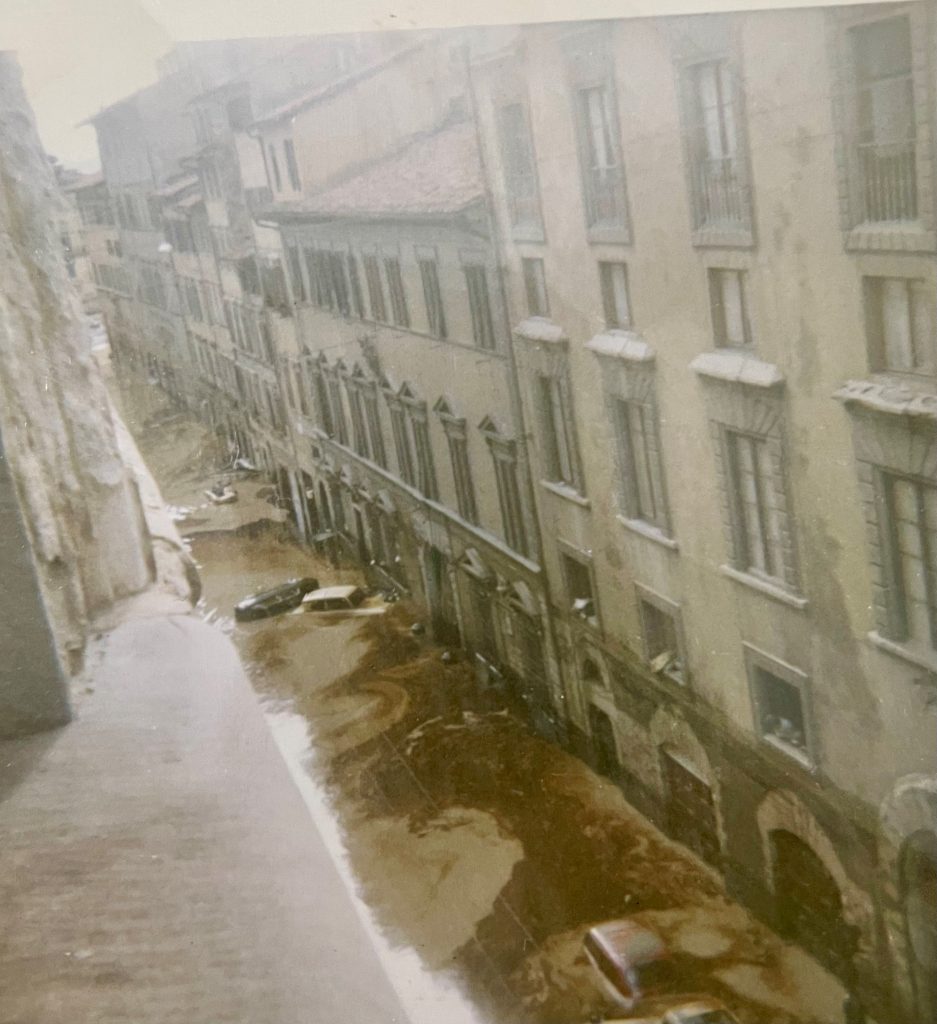
From her bedroom window she could see the Volta dei Tintori, an archway over the street. “But by the middle of the day, you couldn’t see the arch anymore!” As the waters rose, they knocked down the main door of her building, where her family lived on the second floor. “We went up to the third floor family to eat together and panic together, and my host dad would run out to see where the water was, and it was closing in. Then it started to recede. So that was really something!”
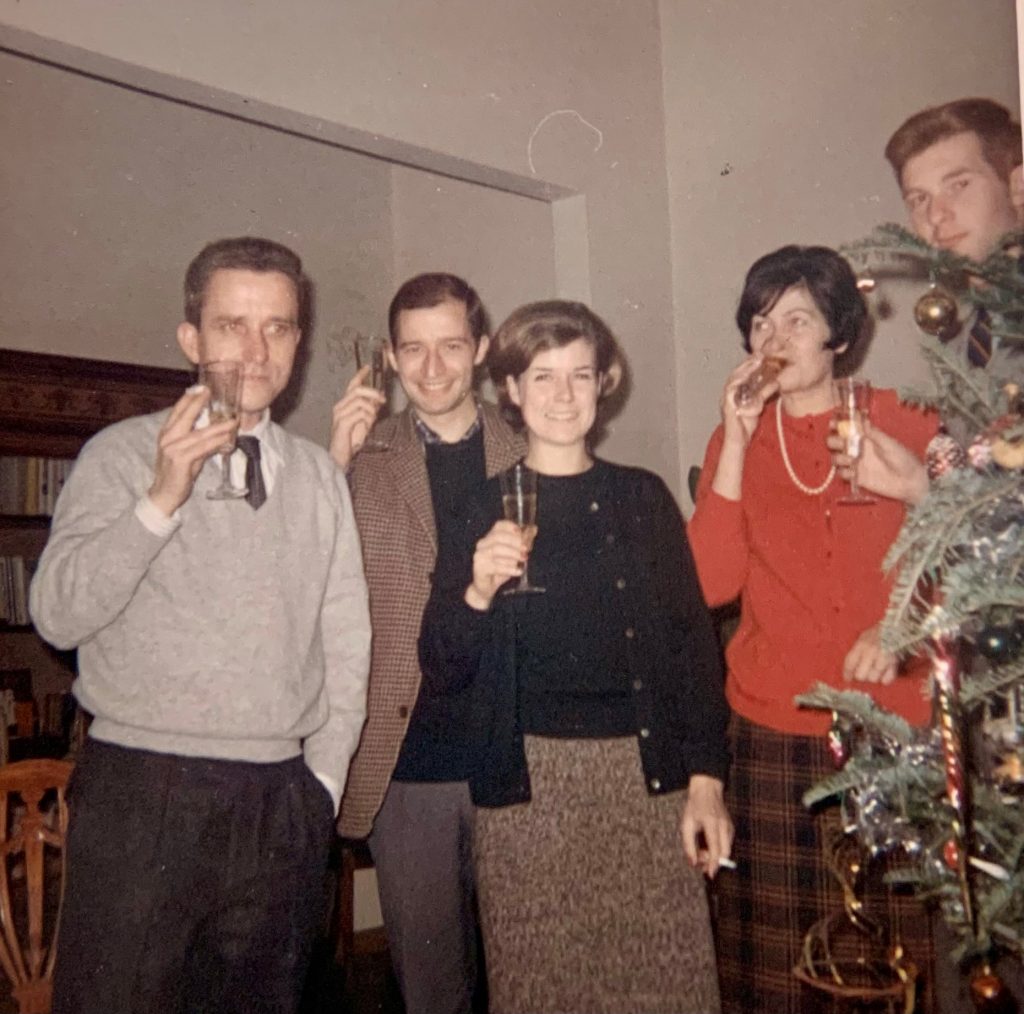
Hana tells us that Syracuse officials contemplated sending students home, but instead they got them vaccines. Hana had to pack up all her things and transfer to a villa/pension in the hills above the city with a few other girls while the city recovered.
She and her fellow students eventually went back to their host families where they finished out the semester. “I was really happy to go back to the same family. My mom was a good cook!”
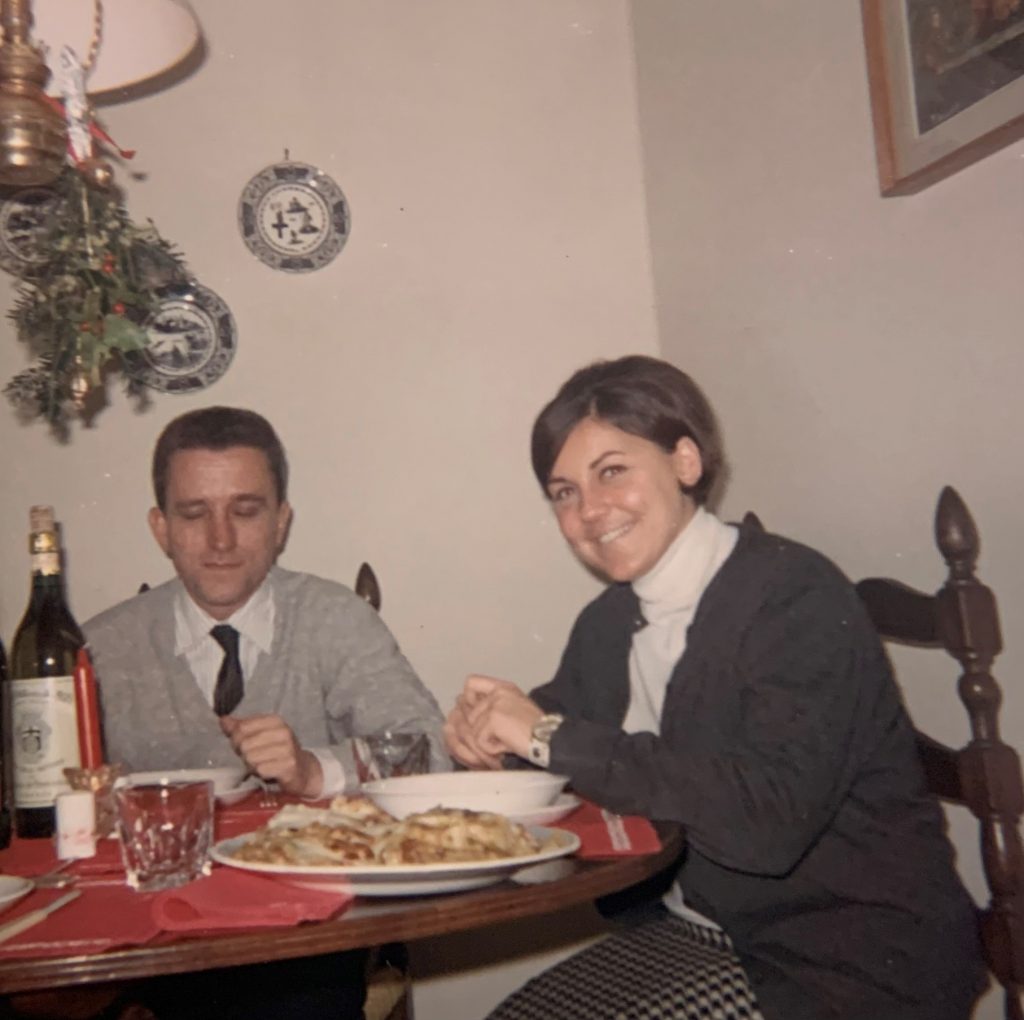
Once the waters had receded, she started walking around the city. “It was still a little messy, and if you dropped something nine out of ten times, you’d be dropping it into mud.” She also remembers shopping and getting some great post-flood deals. “A lot of the shopkeepers salvaged what they could. Everything was deeply discounted. We were looking at bags for something like $2.” She and her classmates were also sent to Bologna to use the public showers there.
A lot has changed in the decades since Hana’s semester abroad. She’s disappointed by how many tourists there are in Florence now. One positive change is the growth of the Syracuse program. “All we saw [of the Villa Rossa] was one classroom and a bathroom!” Countess Bona Gigliucci still lived upstairs, and students had to make do with Piazza Savonarola for their outdoor space. “We met some fellas there, and one girl was going steady throughout the whole thing with one of them,” Hana laughs.
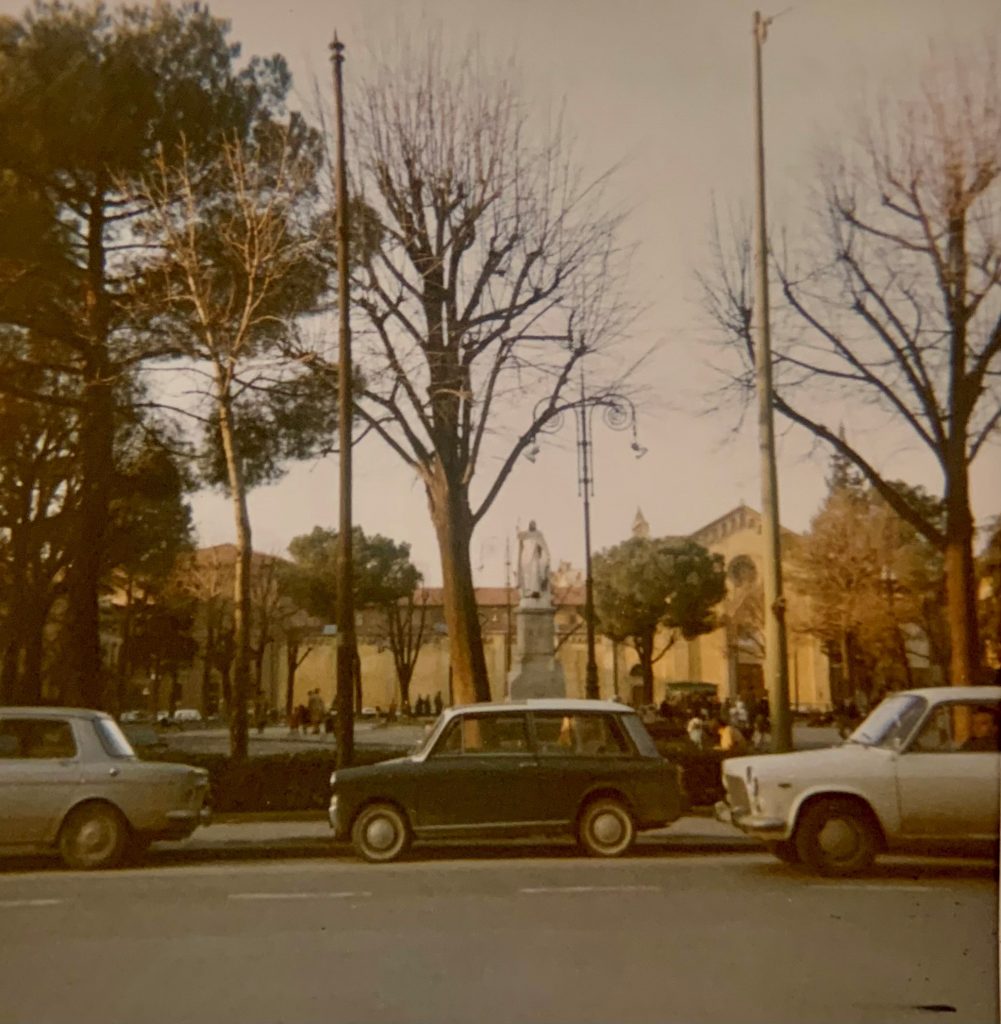
She and her classmates would go home for lunch each day, many of them dozing off in their afternoon classes after the big meal complete with wine. They also hitchhiked to visit other cities on the weekends. “One time an elderly gentleman took us back to our apartment but took us out to dinner first and said that his daughter was in the U.S. and he hoped someone was doing that for her.”
Hana also remembers a couple who worked as caretakers for the program. They were the beloved Sergio and Elia Landi, who later ran our coffeeshop for many years and whose children, Silvia and Fabio, still work at Syracuse Florence today.
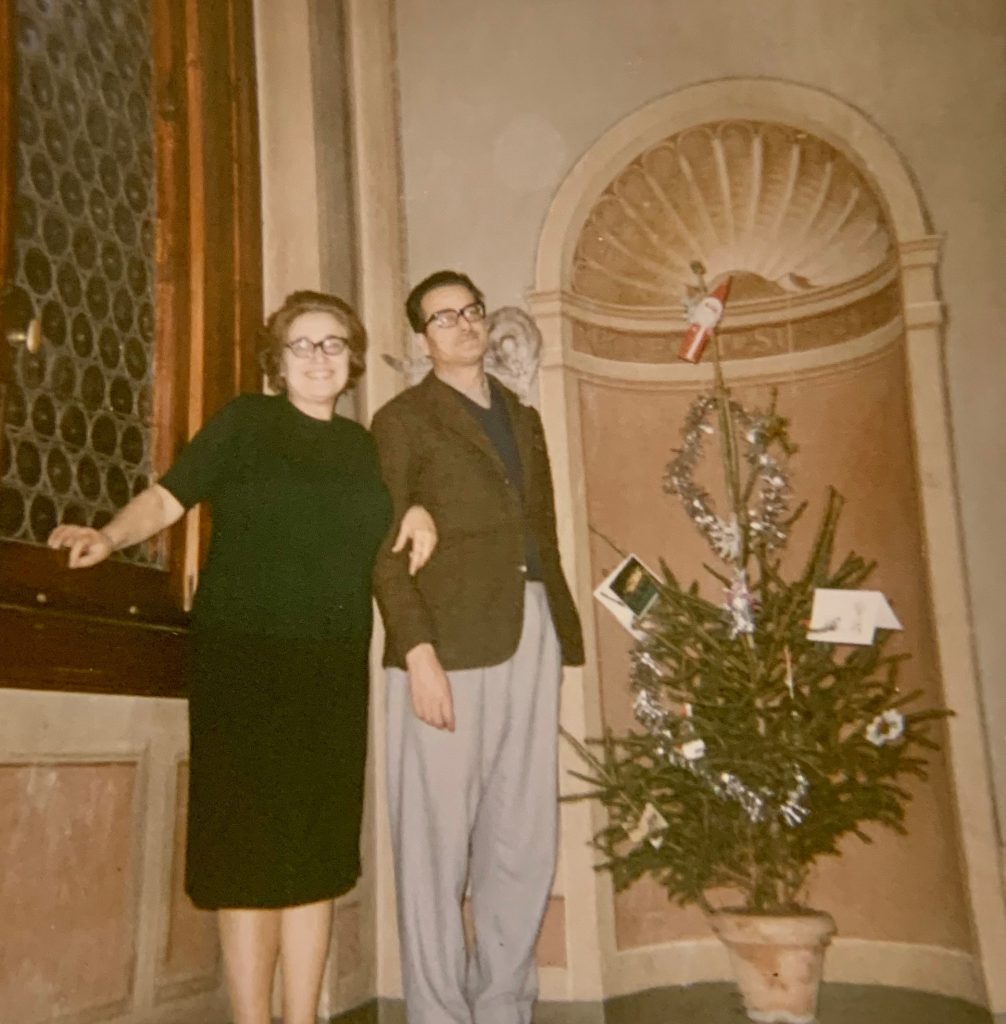
After her time in Florence, Hana worked in art galleries, went back to school for library science, and became a high school librarian. After retiring 20 years ago, she began painting in watercolor and pastel and has exhibited widely throughout the Hudson Valley, where she lives. Florence remains a subject of inspiration for her.
